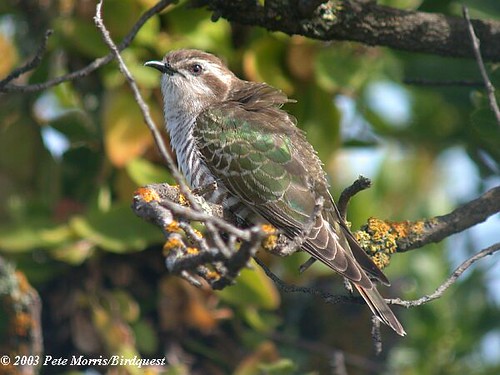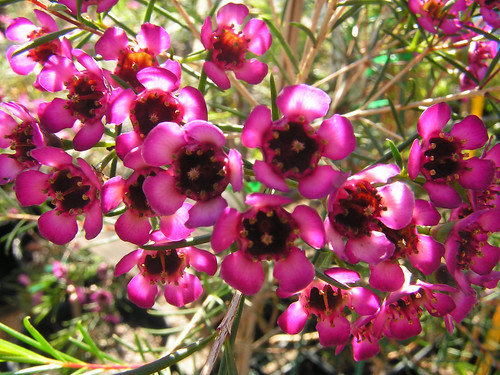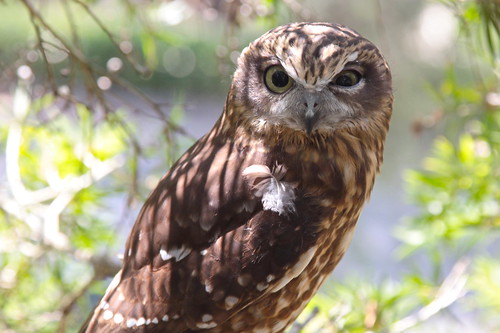REAL WORLD GARDENER Wed. 5pm 2RRR 88.5fm Sydney and Across Australia on the Community Radio Network. www.realworldgardener.com
The complete CRN edition of RWG is available on http://www.cpod.org.au/ , just click on 2RRR to find this week’s edition.
Wildlife in Focus
-with ecologist Sue Stevens.
They’re listed as common but migratory, appearing only in Spring and Summer. Did you know that cuckoos only call during the breeding season?
Any other cuckoo won’t have the combination of green sheen on the upperparts, dark eye-stripe, white eyebrow and barring underneath.In Western Australia, some populations may have declined because populations of their host have declined due to land clearance for agriculture.

Vegetable Heroes:
Chinese Cabbage, sometimes known as Napa Cabbage or Snow Cabbage. These Cabbages are still in the Brassica family but the scientific name is Brassica pekinensis, and Brassica chinensis var Rapa. Chinensis varieties do not form those tight heads like regular cabbage. Instead, they have a much looser head with smooth, crinkly light green leaf blades and large white mid-ribs forming a cluster like celery. What’s in a name? A lot of it’s not strictly what it is. Chinese cabbage is more closely related to turnips and swedes than any sort of cabbage. In fact it’s believed to have been a naturally hybridized cross between pak choi and a turnip. It has a milder flavour and thinner, more delicate leaves than ordinary cabbage. Chinese cabbage can be grown in cool
or cold weather only because it bolts (goes to seed) quickly in hot weather and long days.
Because this program goes around Australia, I like to pick vegetables that we can roughly grow at the same time. Chinese Cabbage though seems to be very particular as to when it can be grown in different regions of Australia. In sub-tropical districts the only time when you can sow the seeds is in August and September. In temperate zones, plant the seeds in October and November, in Cool temperate areas, November and December are the best times, and in arid areas, plant in March to May. So sorry, to those listeners, you’ll just have to put a note in your garden diary. Tip: Even the most bolt-resistant varieties may prematurely bolt to seed if young plants are exposed to frost or over a week of sub (100C) nights. For cold districts, wait until about the last frost date or after to direct seed or transplant out, or protect the plants with fabric row covers Chinese cabbage: is quick growing being ready in two to three months. It can be started in a mini green house and transplanted outside but, Chinese cabbage shocks easily, and transplanting sometimes shocks it into going to seed. Unless you’re sowing in those peat pots that can be transplanted pot ‘n’all into the garden it’s best to sow the seed directly in the veggie bed and thin them to stand 20-30cm or 8 to 12 inches apart. This is quite different from your regular cabbage because I have mentioned in previous programs that transplanting European Cabbage actually helps grow stronger roots on the plant. Water them often to help the young plants grow fast and become tender. They'll probably go to seed if growth slows down. To fertilise chinese cabbage, start applying a liquid fertiliser when they are about 15cm tall. When to pick them? Well. when the cabbage heads are compact and firm and before seed stalks form. Sound a bit hard? How about.. Tip:Once the leaves start folding up, it is usually 3 to 4 weeks until you have a nice head. Cut off the whole plant at ground level.
Design Elements:
 |
| Baroque garden Nuremburg, Germany. photo M. Cannon |
with Garden Designer, Lesley Simpson.
This hedging plant is grown in gardens all over Europe because it grows in acid or alkaline soils, is drought tolerant, can take deep shade for part of the day, and is easily transplanted. There’s many types of Buxus or Box Hedge plants. English Box or Buxus semperivrens-traditionally used in Europe and is shade and frost tolerant. Or try Dutch box, Buxus sempervirens “suffruticosa”, a very dense slow growing buxus that is shade tolerant and only grows to 1 metre. How about Japanese Box, Buxus microphylla var. Japonica? Great for warmer regions and is faster growing than English or Dutch varieties. For areas with warmer drier summers, Korean Box or Buxus microphylla. Loves sun, part-shade and can even take frost. So lot’s to choose from for a hedge, or topiary plant in your garden. Let's find out how to design with them...
Plant of the Week:
with horticulturalist Sabina Fielding-Smith.
Are you short of flowering plants for your vase that add depth and body to the floral arrangement. Well here’s a choice that is easy to grow.
Coming from Western Australia you would expect the this plant would like sandy well drained soils and you would be right. It grows it full sun and semi-shade.
If you don’t have those conditions you can grow Geraldton Wax in pots or raised garden beds, even rockeries. Well-drained soils that are more alkaline than acid are this plant's preference. Add some Dolomite Lime if you're not sure of your soil pH.
Being a naitve plant that has evolved over thousands of years in dry, and poorly fertile soil, Geraldton wax has low nutritional requirements.
Too much nitrogen at flowering time will mean that you get lots of fresh tip growth beyond the flowers.
When you first get your plant of Geraldton Wax, plant them out carefully as the roots break easily.
Powdery mildew might be a problem in more humid areas so make sure there’s plenty of air circulating around the plant.
Once established, plants will tolerate periods of extended dryness. The plants respond well to pruning back by about one third annually. Geraldton wax is one of Australia's most famous wildflowers and is widely used as a cut flower in Australia and overseas.
You can buy seed of Geradlton Wax from an Australian Native seed company. I have seen them for sale in Botanic gardens shops around the country as well.










